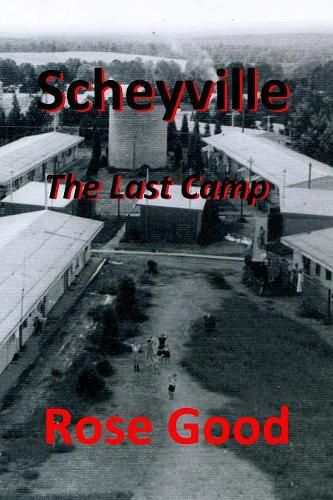Readings Newsletter
Become a Readings Member to make your shopping experience even easier.
Sign in or sign up for free!
You’re not far away from qualifying for FREE standard shipping within Australia
You’ve qualified for FREE standard shipping within Australia
The cart is loading…






This title is printed to order. This book may have been self-published. If so, we cannot guarantee the quality of the content. In the main most books will have gone through the editing process however some may not. We therefore suggest that you be aware of this before ordering this book. If in doubt check either the author or publisher’s details as we are unable to accept any returns unless they are faulty. Please contact us if you have any questions.
Almost twelve million people in Europe found themselves as Displaced Persons after World War II. The author was one of them, together with her mother, originally Ukrainian and evicted from their homes by the War.The majority of these had been inmates of Nazi concentration camps, prisoners of war and slave labour camps.
In 1947 the Australian Government reached an agreement with the International Refugee Organisation (IRO) to take 200,000 DPs from refugee camps in Europe. As the DPs arrived in Australia they were placed in temporary accommodation, mainly in disused army barracks.
One of these camps was Scheyville, situated in the Hawkesbury region, ten kilometres from the rural farmland town of Windsor, northwest of Sydney. It was an isolated place, surrounded by broad-leaved ironbark and scribbly gum trees and lagoons, ideal as a military school for artillery and anti-tank warfare during WWII, which it had been in the past. However, it was not suitable for families scarred physically and emotionally by their past experiences.
Rose and her family arrived in Scheyville in 1954 from Greta where they had spent the last two years, after being shuffled from one transit camp to another in the country towns of Bathurst and Parkes in western New South Wales. Scheyville was the last camp.
$9.00 standard shipping within Australia
FREE standard shipping within Australia for orders over $100.00
Express & International shipping calculated at checkout
This title is printed to order. This book may have been self-published. If so, we cannot guarantee the quality of the content. In the main most books will have gone through the editing process however some may not. We therefore suggest that you be aware of this before ordering this book. If in doubt check either the author or publisher’s details as we are unable to accept any returns unless they are faulty. Please contact us if you have any questions.
Almost twelve million people in Europe found themselves as Displaced Persons after World War II. The author was one of them, together with her mother, originally Ukrainian and evicted from their homes by the War.The majority of these had been inmates of Nazi concentration camps, prisoners of war and slave labour camps.
In 1947 the Australian Government reached an agreement with the International Refugee Organisation (IRO) to take 200,000 DPs from refugee camps in Europe. As the DPs arrived in Australia they were placed in temporary accommodation, mainly in disused army barracks.
One of these camps was Scheyville, situated in the Hawkesbury region, ten kilometres from the rural farmland town of Windsor, northwest of Sydney. It was an isolated place, surrounded by broad-leaved ironbark and scribbly gum trees and lagoons, ideal as a military school for artillery and anti-tank warfare during WWII, which it had been in the past. However, it was not suitable for families scarred physically and emotionally by their past experiences.
Rose and her family arrived in Scheyville in 1954 from Greta where they had spent the last two years, after being shuffled from one transit camp to another in the country towns of Bathurst and Parkes in western New South Wales. Scheyville was the last camp.